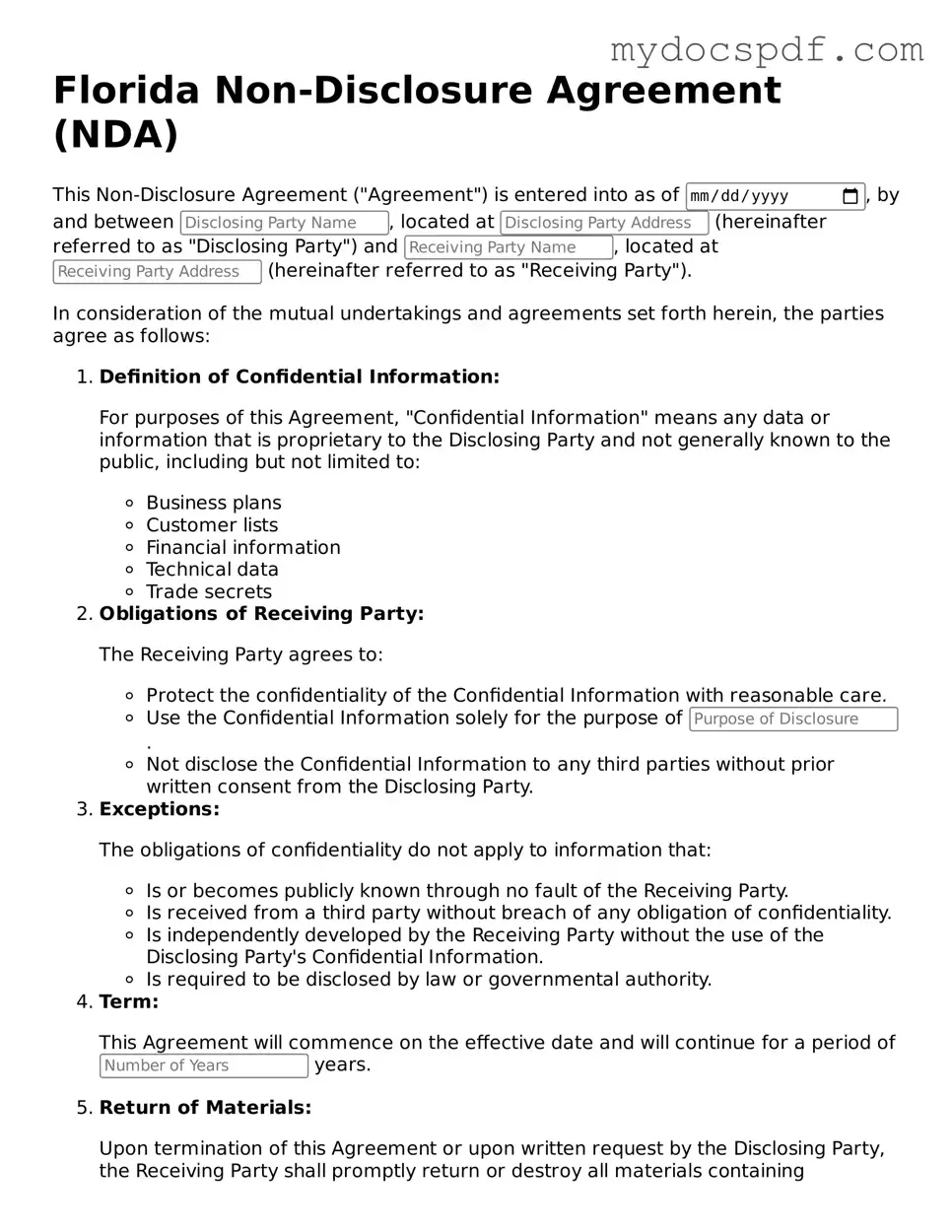Fillable Florida Non-disclosure Agreement Document
A Florida Non-disclosure Agreement (NDA) is a legal contract designed to protect confidential information shared between parties. This form ensures that sensitive data remains private and cannot be disclosed to unauthorized individuals. By signing an NDA, parties establish trust and outline the terms under which information can be shared or kept secret.
Access Editor Here
